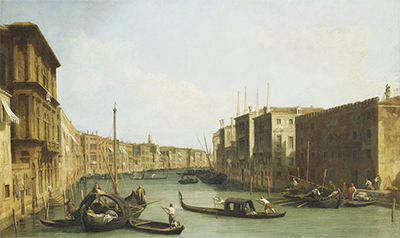 Buy Art Prints Now
Buy Art Prints Nowfrom Amazon
* As an Amazon Associate, and partner with Google Adsense and Ezoic, I earn from qualifying purchases.
The Italian Painter, Giovanni Antonio Canal made more than one hundred paintings of the Grand Canal in Venice. All the paintings have different viewpoints, but they share a similar perspective. The paintings are all oil on canvas of various sizes. All the paintings were done around the 1730s when Venice was bustling with travellers from all over the world.
The painter focuses mainly on the landscape of the canal, with buildings taking a large composition. He draws all the features of the buildings into details, including their decorative features. The activities in the canal are depicted by people with their boats in the canal. The Venetian view painters of the 18th century made view paintings that would depict the topography of the city as records of traveller's experiences in Venice. Canaletto's style of art was the most notable, and he was much sought after because his paintings had a high precision for the city's features, activities and the environment. His accuracy in depicting the canal made it easier to date his canvases correctly using records of features such as major pavement and buildings renovations. That said, he did not put accuracy ahead of compositional value, and so would sometimes use creative license within his paintings in order to produce the best artwork possible.
The Grand Canal paintings by Canaletto are spread in various museums all over Europe. For example, the Grand Canal painting looking East with Santa Maria della Salute is currently a property of the Metropolitan Museum of Art. Another image of the Grand Canal from San Vio is currently in Museo Nacional Tyssen-Bornemisza, Madrid and other formats are also owned privately. Canaletto's painting career started when he worked together with his father's occupation as a theatrical scene painter. He was later inspired by the works of Roman Vedutisa Giovanni Paolo Panini and left his father's occupation to start painting the daily life in the city. He also improved his skills after he studied with Luca Carlevarijs, who was skilful in urban cityscapes paintings. He initially worked within ruins found across various cities before becoming more ambitious and moving on to complex scenes of existing, live architecture and it is for the latter that he is now most famous.
Canaletto is known to have inspired a number of artist who followed on shortly afterwards, including Bernado Belloto, a student and nephew of Canaletto, was also an urban landscape painter and printmaker. The painter may have developed an interest in landscape art after working with Canaletto and his brother before he moved to France. Bernardo's style of art was very similar to that of the Venetian artist and may have also used a camera obscura to achieve a better prescription of city views. The Venetian would later travel to the UK and spread his reputation into new parts of the European continent, also helping to inspire artists outside of his native Italian boundaries. The production of etchings also offered him the opportunity to spread his art into lower levels of society, as well as across wider areas because of the portability of the printed art form.




